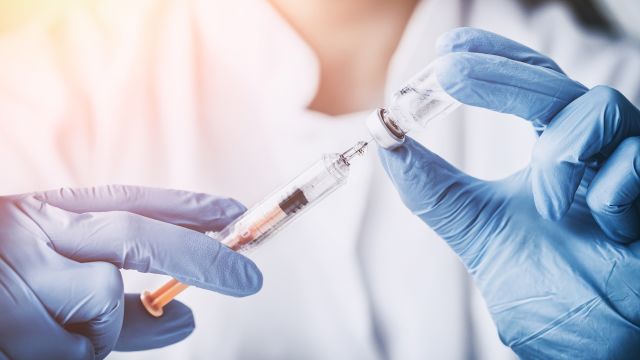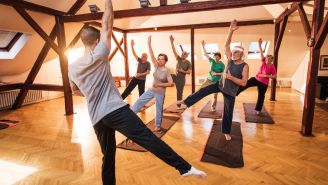You've tried everything to relieve your joint pain, from taking over-the-counter or prescription drugs to exercising more to seeing a physical therapist. These methods offer periods of relief, but your pain never really lets up. Maybe you've heard that athletes get steroid injections for joint injuries and you're thinking about trying that as your next step. Also known as cortisone shots, these injections could be an important part of your joint treatment program–with a few warnings.
Are steroid injections right for you?
Before you even think about scheduling an injection, it's important to understand what steroids can and cannot do for joint pain.
"Steroid injections can reduce the swelling and inflammation–and therefore, pain–from a joint problem," says Grant Cooper, MD, co-founder and co-director of the Princeton Spine and Joint Center in Princeton, N.J. "But steroid injections cannot change the arthritis in a joint, repair damaged cartilage or change the biomechanics of a joint." So, if you're joints are swollen and tender, these shots may provide some pain relief, but they don't cure whatever is actually causing the problem, like arthritis, bursitis or tendinitis.
How are steroid injections given?
Usually, a steroid injection is given while you're seated or lying down at the doctor's office. First, your doctor will determine which areas of your joint to target with the injection and thoroughly cleanse those areas. Selecting the right area of your joints helps ensure the procedure's short- and long-term success. These preparation steps also help reduce the risk of infection and nerve or bone damage.
"Many joint specialists use ultrasound guidance for most joint injections," Cooper says. "Studies have shown that failure to use image guidance results in the injection missing the target joint in as much as 30-40% of cases, depending on the joint. Under ultrasound guidance, the needle can be seen advancing into the joint, so there's no question as to the placement of the needle."
The needle. That's the part that can put some people off. Even though the steroid is often mixed with lidocaine to numb the area a bit, most people feel some discomfort or pain during the procedure. Your doctor can inject the lidocaine with a tiny needle first and wait for the numbing to set in, but the downside is that you'll get two shots. If you tend to get nervous around needles, be sure to tell your doctor. A good doc will go a little more slowly and explain what's happening, which can help calm your nerves.
What happens after the injection?
It can take anywhere from a few days to two weeks for the steroid to kick in. "When effective, steroid injections will generally last for about three months," Dr. Cooper says. "For this reason, it's really important to think of the steroid injection as one part of the treatment, but not the whole treatment."
If you decide to opt for a steroid injection, it's important to follow through with other forms of treatment–especially physical therapy–to limit the number of injections you may need in the future. Take this as a window of opportunity to become more active and commit to your overall treatment plan to minimize the chance of your pain returning.
What else can be done?
If a steroid injection doesn't get your pain under control, your doctor might recommend other options, depending on your joint problem and any other medical issues you have. "Other treatment strategies may include different types of physical therapy, bracing, oral medications, topical anti-inflammatory medications and compound creams, alternative medicine (such as acupuncture, osteopathic manipulation and chiropractic care), and possibly surgery," Cooper says.
As always, be sure to discuss the benefits and risks of any procedure with your doctor.






